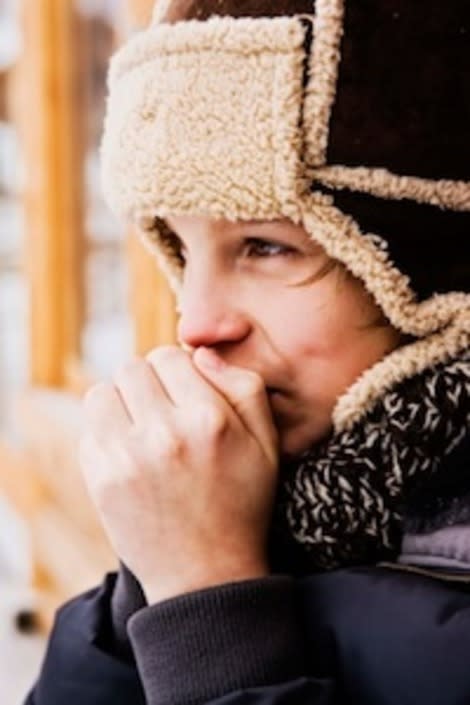What Cold Hands Say About Your Health

The expression "cold hands, warm heart" is sweet, but it's not accurate when it comes to what chilly hands may indicate about your health.
Related link: How to exercise in cold winter weather
What's normal?
As the temperature drops, it's normal for hands to feel colder. Reducing blood circulation to the extremities is the body's way of keeping your core warm. Even in milder weather, having cold hands may simply mean that your circulatory system is working to regulate your overall body heat. However, there are some symptoms to watch out for that may mean you have a more serious underlying health issue.
Warning signs of a health problem
These symptoms are warning signs that you might have a nerve or circulation problem and should alert your doctor:
1. Persistently cold hands and feet
2. Changes in the skin color
3. Numbness
4. Tingling
5. Sores or blisters
6. Tightened or hardened skin
Ailments commonly associated with cold hands
According to the Mayo Clinic, the most common diseases associated with cold hands are: anemia, Buerger's disease, diabetes, peripheral artery disease (PAD), Raynaud's disease, and scleroderma. These are all conditions that can reduce blood circulation to the extremities. A doctor can diagnose your underlying problem and suggest appropriate treatment.
The book "Body Signs" by Joan Liebmann-Smith and Jacqueline Nardi Egan points out that persistently cold hands and feet can also be a reaction to certain medications such as beta-blockers and thyroid and migraine medications. Check with your doctor or pharmacist.
Frostbite and frost nip
Severely cold hands can result in frostbite. When the body is exposed to below-freezing temperatures for a prolonged period, skin tissues can freeze causing frostbite. Frostbite most commonly occurs on the hands, feet, nose, and ears. You may experience numbness or tingling, and your skin may appear waxy and white and feel hard to the touch. In severe cases, the skin may blister and blacken as the cells die. If you think you are experiencing frostbite, go to a doctor or the emergency room for immediate evaluation.
Its fairly common to be "frost nipped" during the winter, especially when skiing or skating or enjoying other outdoor activities. Frost nip occurs when only the outermost layer of skin tissue is frozen. The skin may look white in small areas but retains its pliancy. Treat by placing the affected area on a warm object or immerse in lukewarm water. It's possible the damaged area will become extra sensitive to cold.
Keeping hands warm
The best way to keep hands warm outdoors is to wear waterproof mittens. If you must wear gloves, try two layers, but make sure they are slightly lose so they won't reduce your circulation. Indoors, fingerless gloves will allow you to work and help keep you toasty.
Related links:
Cold weather making your joints hurt? Three ways to find relief
10 Waffle recipes for cold weather breakfasts
Pippa Middleton's winter look is really hot
